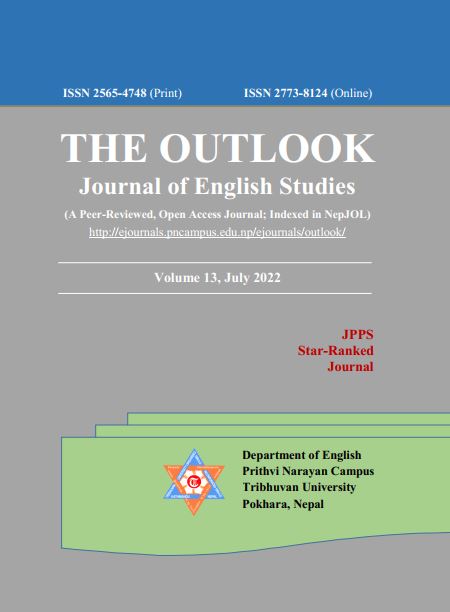Narratives of Hegemony: A Critical Analysis of Dissidence in Sah's “Jayath” and Theeng's “Yambunera”
DOI:
https://doi.org/10.3126/ojes.v13i1.46689Keywords:
Hegemony, indigenous community, structural power, Tamang, Madhesi, dissidenceAbstract
Nepal incorporates a long history of exploitation, mistreatment and marginalization of indigenous communities, including the Tamangs and the Madhesis. Throughout its history, the Hindu-based state has held power and taken control over the ethnic communities via the mainstream culture, language and the idea of homogenous national identity, which consistently rejects multiple indigenous cultural identities and voices. In this regard, the paper critically analyzes narratives of hegemony, namely, structural domination as well as the resistance of marginal community portrayed in Nepali stories “Jayath” ("A Wooden Pole") and “Yambunera” ("The Outskirts of Kathmandu") written by Shyam Sah and Bina Theeng respectively. Both stories deal with the issues of cultural hegemony and the dissenting voice of the marginalized characters that challenge the structural power. The paper also argues that despite being continuously suppressed, the marginalized community musters strength to raise their voice against the power blocs. To analyze the systematic outcast of peripheral community and their resistance, I have employed Michel Foucault’s concept of institutional power and Susan Seymour’s idea of resistance as theoretical backing.
Downloads
Downloads
Published
How to Cite
Issue
Section
License
Copyright (c) 2022 Kumari Lama

This work is licensed under a Creative Commons Attribution-NonCommercial 4.0 International License.
This license enables reusers to distribute, remix, adapt, and build upon the material in any medium or format for noncommercial purposes only, and only so long as attribution is given to the creator.

